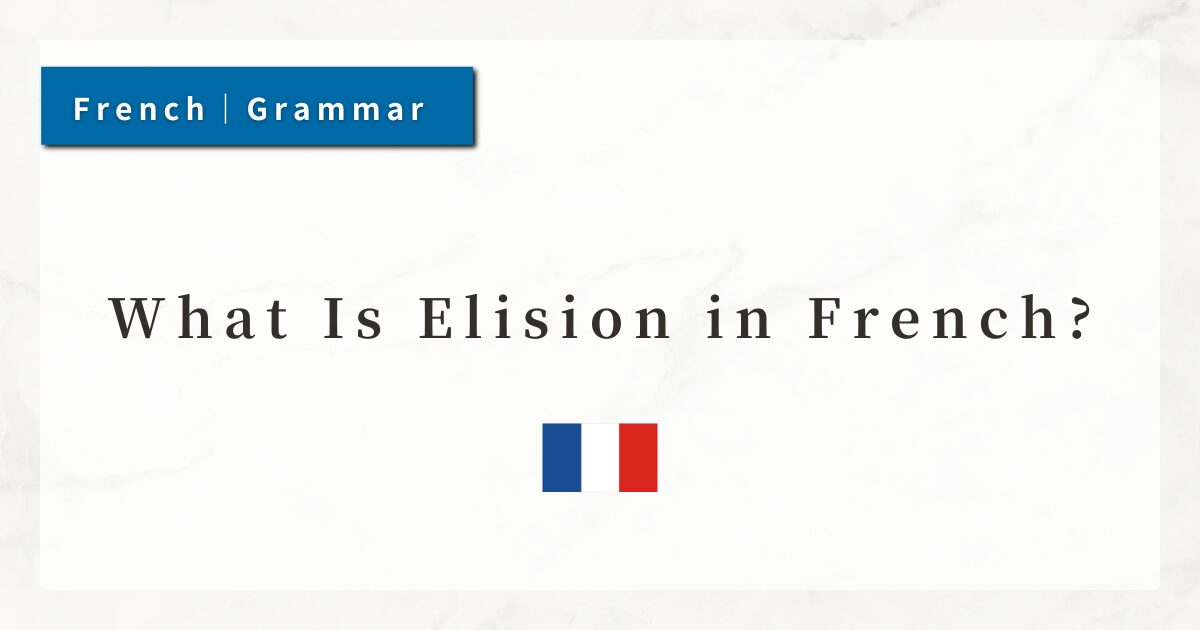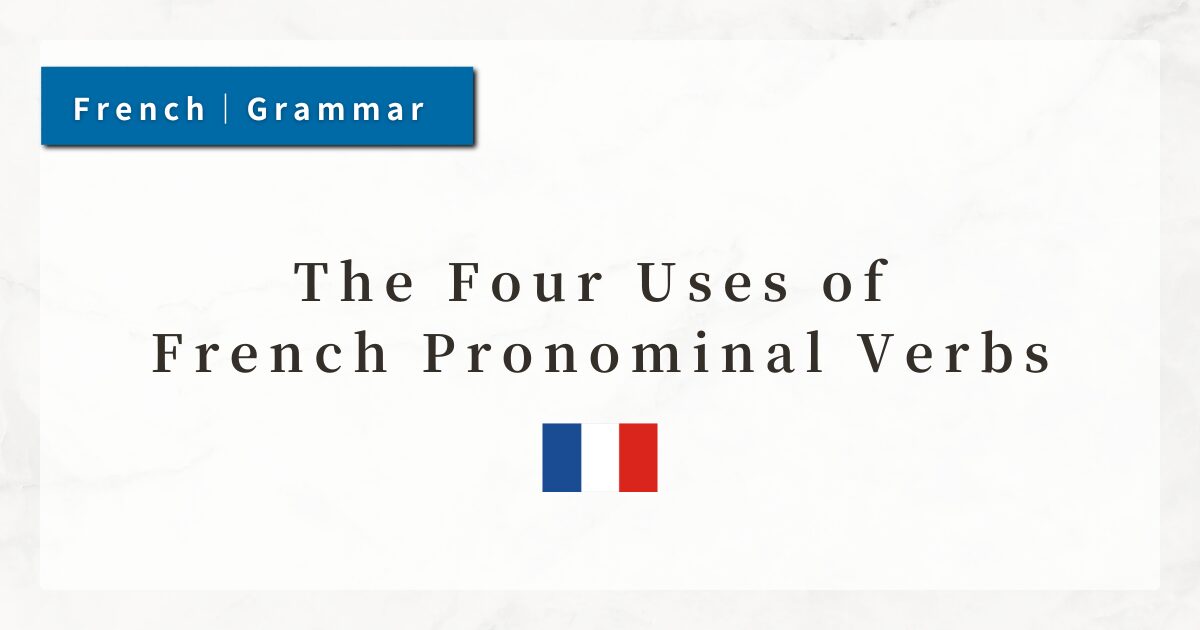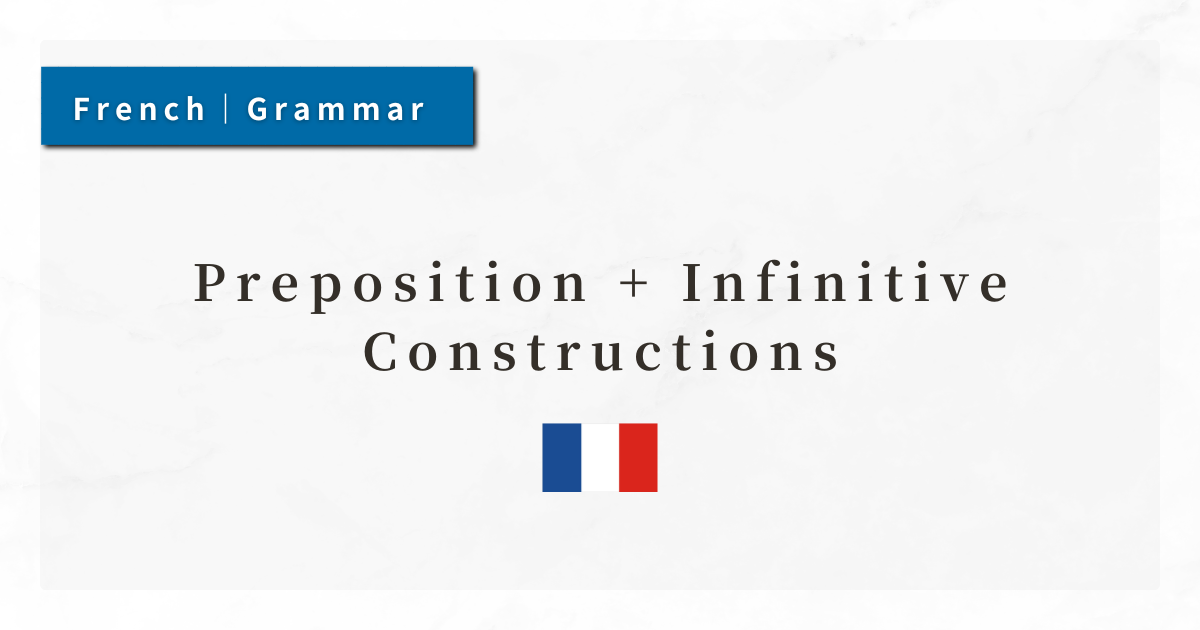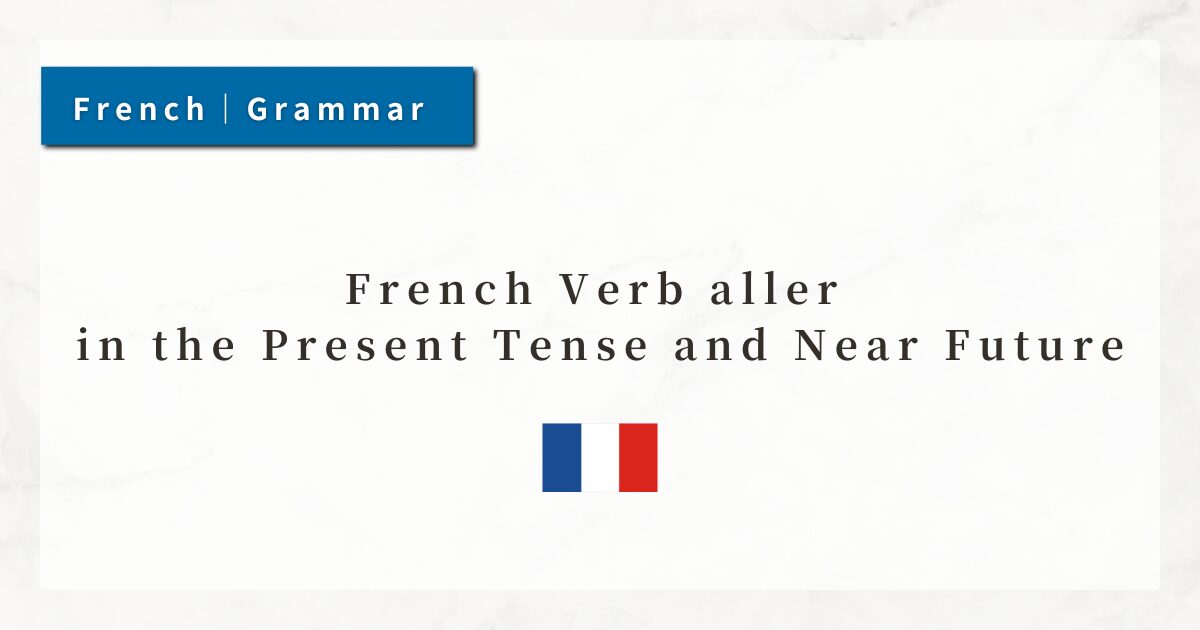#6 What Is Elision in French? | Pronunciation and Grammar Rules

In French, vowels at the end of words are often dropped and connected to the following word in order to make speech smoother.
This phenomenon is called elision. It is an essential feature of French, as it helps create the proper rhythm and intonation of the language.
In this lesson, I will explain the rules of elision, its exceptions, and how to use it naturally.
1. What Is Elision?
Elision occurs when a word ending in a vowel comes before a word beginning with a vowel or a mute h.
In such cases, the final vowel is omitted and replaced with an apostrophe (’). This rule exists to maintain smooth sound flow in French, and it is required both phonetically and grammatically.
Here are some common examples:
| Item | Before Elision | After Elision | Meaning |
|---|---|---|---|
| Definite article le | le ami | l’ami | the friend (masculine) |
| Definite article la | la école | l’école | the school |
| Subject pronoun je | je aime | j’aime | I like |
| Negation ne | ne aime pas | n’aime pas | do not like |
| Demonstrative adjective ce | ce homme | cet homme (form changes) | this man |
With words beginning with h, elision only occurs when the h is mute (h muet). If the h is aspirated (h aspiré), no elision takes place.
2. Why Is Elision Necessary?
French places great importance on smooth sound flow. If two vowels occur in sequence, the pronunciation sounds awkward and unnatural. Elision eliminates the gap, producing a more fluid rhythm.
Failure to apply elision may make speech sound clumsy, and in formal contexts it can even be considered grammatically incorrect.
3. Cases Where Elision Is Required
Elision is obligatory when the following word begins with a vowel (a, e, i, o, u) or a silent h. The non-elided forms (e.g., je aime) are considered incorrect.
3-1. Definite articles (le, la) + vowel/mute h
- le ami → l’ami (the friend)
- la école → l’école (the school)
3-2. Subject pronoun (je) + vowel
- je aime → j’aime (I like)
3-3. Negation (ne) + vowel
- ne aime pas → n’aime pas (do not like)
3-4. Relative pronoun (que) + vowel
- que il pense → qu’il pense (that he thinks)
3-5. Mute h
- le homme → l’homme (the man)
But with an aspirated h, no elision occurs:
- le héros → le héros (the hero)
Since the distinction between mute and aspirated h cannot be determined from pronunciation alone, it must be learned word by word, usually with the help of a dictionary.
This is one of the more challenging points for French learners.
4. Difference Between Elision and Liaison
Elision is often confused with liaison, but the two are different:
| Item | Elision | Liaison |
|---|---|---|
| Content | Dropping a vowel and replacing it with an apostrophe | Linking a final consonant to the next vowel |
| Example | je aime → j’aime | vous avez → [vu‿z‿ave] |
| Purpose | Smooth flow of sounds | Smooth flow of sounds |
Elision is a written change (apostrophe), while liaison is a phonetic change (pronouncing a consonant).
5. Summary
- Elision is the omission of a final vowel, replaced by an apostrophe, and is grammatically required.
- It occurs with definite articles, pronouns, negations, and certain other words.
- It applies before vowels and mute h, but not before aspirated h.
- Mastery of elision is essential for natural and fluent French pronunciation.
- Do not confuse elision with liaison, as they are different phenomena.




